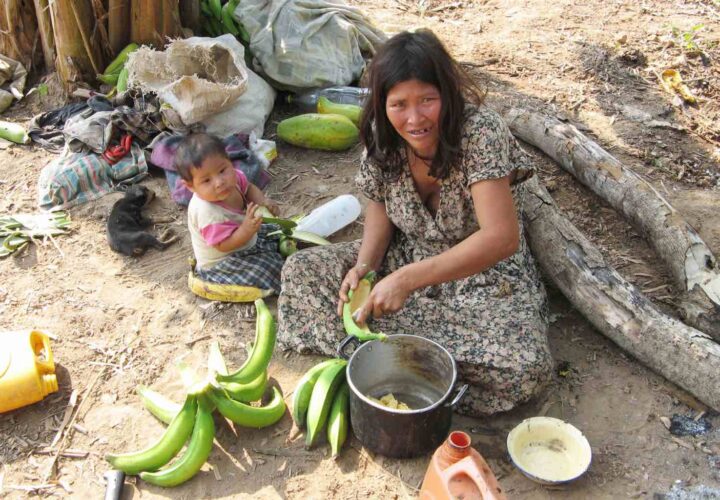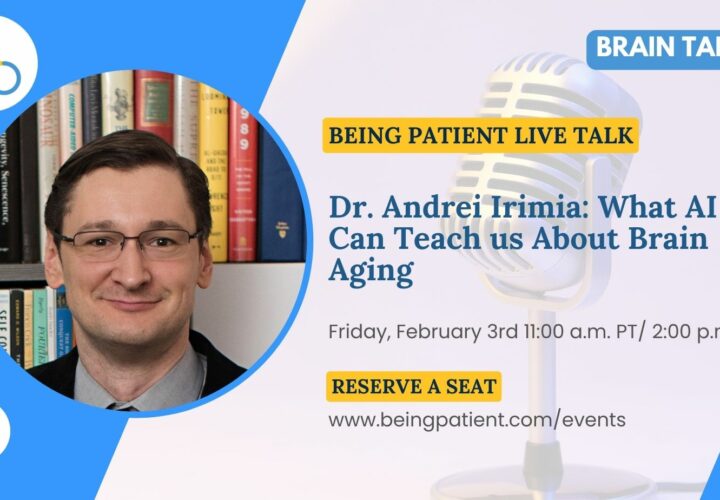These indigenous communities in the Bolivian Amazon were recently found by scientists to have the lowest rates of brain and heart disease ever recorded. Dr. Andrei Irimia discusses his research on brain aging — and how they're different.
According to the World Health Organization, more than 55 million people have dementia worldwide. And that number is growing: Every year, nearly 10 million new cases are diagnosed. But, new data compiled from two indigenous groups living in the Bolivian Amazon show some of the lowest rates of dementia reported in the world. What makes them different?
Researchers at University of Southern California recentlyhave found an indigenous community in the Bolivian Amazon largely untouched by the disease: the Tsimané indigenous community in Bolivia.
In addition to living apart from commercialization and industrialization, the Tsimané people engage in comparatively high levels of physical activity, according to Dr. Andrei Irimia, a a computational neuroscientist, neurogerontologist, biomedical engineering researcher and biophysicist at USC.
“The Tsimané are a group of about 18,000 people who live in the Bolivian Amazon basin, and they have a non-industrial lifestyle— they do not have electricity,” Irimia told Being Patient. “There is minimal interaction with the industrialized world. So, we suspected that it would be very interesting to look at their brain health because that might give us some insights into how the effects of industrialization on human health have affected us in the past 200 to 250 years since the advent of large-scale industrialization and food processing.”
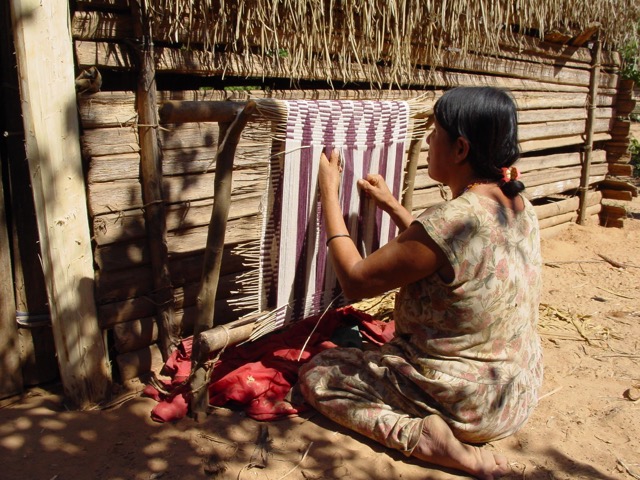
Irimia and his colleagues studied the brains of adult members of the Tsimané and the more industrialized Mosetén indigenous communities in Bolivia to learn more about the differences in brain aging.
Irimia and his researchers used CT scans to measure brain volume by age. They also measured their study participants’ body mass index, blood pressure, total cholesterol, and other indicators of overall health. The team’s findings offer clues about food consumption and exercise levels that promote healthy brain aging while lowering the risk of disease.
In this conversation with Being Patient EIC Deborah Kan, he shares insights into the latest findings and what it could mean for brain health. Watch the full conversation, or read a transcript from the conversation below.
Being Patient: Your latest study is on residents of the Bolivian Amazon, and the research aims to understand why these people have lower rates of Alzheimer’s. Is that correct?
Andrei Irimia: This is a very exciting study we’ve been working on for a while. We studied two indigenous populations in South America in the Bolivian Amazon. These are Tsimané, a nonindustrial population, and the Mosetén, a population that is not industrial but has more exposure to industrialization. So, the Mosetén is somewhere between the Tsimané, who are completely non-industrial, and the industrial societies in Western Europe, North America, and the world.
Being Patient: What was the link between Alzheimer’s prevention and these particular communities? Was there something apparent that made you say we need to study them in the context of brain health?
Irimia: We did not know this originally. This study has been ongoing for the past 20 years, and I’ve been involved in it for about eight years. My portion of it involves the analysis of brain images and brain health parameters. Originally, this was started by some of my collaborators, Hillard Kaplan at Chapman University, Mike Gurven at UC Santa Barbara, and others on our team. The original purpose was to understand industrialization’s effects on societies, brain health, and human health by looking at societies that live a non-industrial lifestyle, like the Tsimané.
Being Patient: So, you’re looking at diet and pollution, things that we have a lot more exposure to in the industrialized world?
Irimia: Right, so the Tsimané live in an area that does not have much in the way of air pollution, although there is presumably some pollution due to fires that they use for cooking.
There’s also, however, very little exposure to processed foods because they eat off the land. They do practice agriculture, but they also hunt in the forest, and they have a lot of very high levels of physical activity, such that their lifestyle is quite different from the sedentary lifestyle here in the United States or elsewhere in the world.
They have a diet that’s very high in fruits, vegetables, and fiber. The meats they eat are usually fish and lean game meat that they hunt from animals in the forest.
Being Patient: What did you see in terms of defining brain health and concluding, you know, perhaps why there’s less Alzheimer’s? You said you were responsible for the scanning imaging part of this study. What did their brains look like compared to other people in the industrialized world?
Irimia: Compared to other individuals of the same age and sex in the United States, for example, the brains of the Tsimané look much, much younger. We had a previous study that reported on this and found that their rates of brain atrophy, so the rates of brain shrinking are considerably slower than seen in the United States and Europe. So, it’s very interesting because, as you know from our last podcast, brain aging is a risk factor or reflects the risk for Alzheimer’s disease. So then we asked ourselves, what is the risk of the Tsimané people developing dementia?
We had a study earlier this year on Alzheimer’s and dementia, where we reported that Tsimané has one of the lowest risk rates for dementia. In fact, their dementia is not usually of the Alzheimer’s type. It seems to be a novel type of dementia syndrome that is new to science. So we reported that earlier this year, and then in the paper we just published, we looked at investigating brain health in the larger context of health parameters.
We looked especially at metabolism and food intake relative to the ideal food intake and exercise level for brain health.
“The brains of the Tsimané look
much, much younger.”
Being Patient: When you say atrophy, which parts of the brain are you talking about? Or do you see brain shrinkage altogether? In addition, what are you measuring in the brain to tell you this is a healthier brain than someone else, like a person who lives in a very polluted city?
Irimia: We see some global effects. So, we see all regions or almost all regions of the brain looking a lot younger. What I mean by a lot younger is that we don’t see the hallmarks of atrophy to the same extent as in, say, the United States. So, what are these hallmarks? One of them is ventricular enlargement. In the brain, we have these large cisternae that contain cerebrospinal fluid. In youth, they’re relatively small.
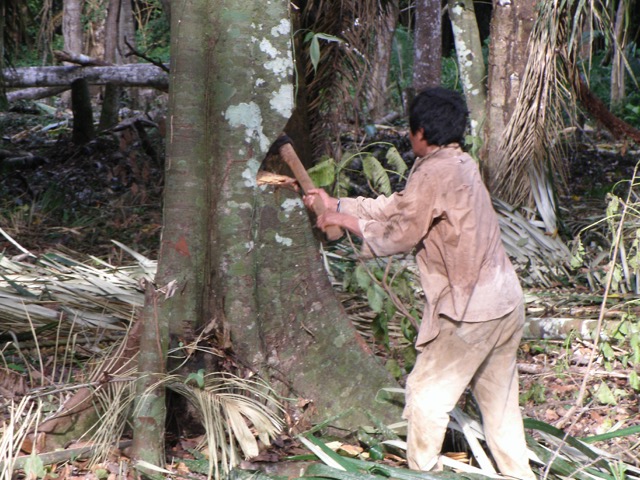
With age, they enlarge because the brain is shrinking. So in the Tsimané, we see much smaller cerebral ventricles than we do in persons of the same age in the United States. So, we implemented some novel image analysis algorithms to calculate brain volumes and to separate the brain volume into gray matter and white matter, which are the two components of the brain tissue.
Then we calculated regional and total atrophy rates relative to and compared this to the rates seen in cohorts from the United States in Europe. Then we found that at the global level, we have a relatively much slower rate of the loss of brain tissue in the Tsimané relative to the United States and Europe.
Being Patient: Do we know if there is any Alzheimer’s in the Tsimané people?
Irimia: There are very few cases of dementia, but a few of them have an Alzheimer’s like pattern of cognitive impairment. A majority of them, however, seem to be somewhat different in their presentation. However, there are so few cases there. This is incredible in a population of 17,000, with very few cases of dementia.
It’s difficult to anticipate what the implications are from the standpoint of nosology for Alzheimer’s because they’re so few cases. So we have one of the groups of people with the lowest incidences of dementia in the world.
“We have one of the groups of people with the lowest incidences of dementia in the world.”
Being Patient: Do you know if any of them have the hallmarks like plaque in their brains? Were there any biomarkers in your study, like plaques and tangles?
Irimia: This is something we could not study, partly because we only did pre-mortem imaging using CT. PET imaging is not available in the area of Bolivia where the participants were scanned. We also didn’t have access to post-mortem samples. We did have CT scans of the brain and a neurological exam and cognitive exam that allowed our collaborators on the clinical team to gauge the extent to which the subjects were cognitively impaired or had dementia.
Being Patient: Was there any genetic testing involved to understand whether or not some of the Tsimané were carriers for ApoE4?
Irimia: Yes. So, as you know, the ApoE allele: e3, e4, and e2— these alleles are important in determining the risk for Alzheimer’s disease. This is because, in industrialized societies, the e4 allele usually is reflecting a risk for an increased risk for Alzheimer’s disease.
In the Tsimané, we did have genetic sequencing data, and the prevalence of e3 is not that different from that seen in countries like the United States. However, again, given the predominance of e4 that we did have, the number of cases of dementia is extremely small.
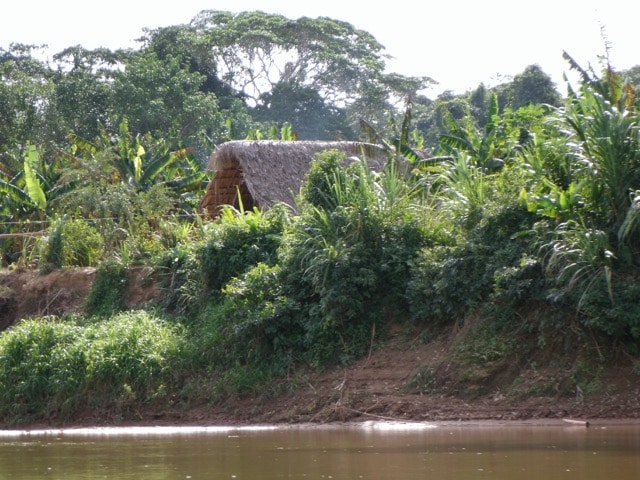
This goes back to a very interesting set of observations that led to a hypothesis that’s been put forward that in the evolutionary past, the e4 allele was actually protective against dementia in the context of an environment with high levels of exercise and healthy eating habits.
However, as we transitioned from this environment to an industrialized environment, the theory goes, the e4 allele became a risk factor because when it interacts with an environment. When you have a lot of sedentary lifestyles and poor diets, the e4 allele becomes a risk factor.
So, in the Tsimané, even though we see rates of e4 that are not that different from the US and Europe, we do have very low rates of dementia, which seems to confirm or at least adds to the evidence in favor of this hypothesis that e4 was originally protective against dementia, or at least not as much of a risk factor as it is today in industrialized countries.
Being Patient: That’s interesting. What did you see in terms of pollution? Comparing the Tsimané and Mosetén communities, how much pollution do they have in their environments?
Irimia: The Mosetén are somewhat more exposed to industrial lifestyles in the sense that they interact somewhat more with the market economy of Bolivia, they purchase some of the pre-processed foods that are available on this market, and they also have lower levels of physical exercise. When we did this study and other studies we’ve been involved in, we did look at a comparison of the Tsimané and Mosetén in terms of brain size.
What we did find, not only relative to brain size but also to other health parameters, is that this more sedentary lifestyle, even though still less sedentary than that in the United States, is actually associated with a faster rate of brain volume decrease and with other cardiovascular parameters that are reflective of cardiovascular disease risk.
So, the Mosetén may be exposed to also partly more pollution, but we’re still looking at the pollution data. Still, there is a lot more interaction between the industrialized market and the market economy of Bolivia. So, you have this population that is somewhere in the middle between a group like the Tsimané, who do not have high rates of sedentarism, who have a very healthy diet, and what we have in the United States.
Being Patient: When discussing exercise, how much do the Tsimané people get?
Irimia: On average, it’s about 18 to 20 thousand steps a day. But, there are some in this population who actually get more and who get quite a bit more from 23 up to 27 thousand steps a day. It’s usually not high-intensity exercise. It’s usually just moving around during the day, doing chores, hunting for animals, and doing activities of daily living. So, it’s usually constant movements throughout the day.
Being Patient: Is community a big part of it? What is the design and structure of the social setting and family there?
Irimia: They live in villages clustered in a geographic area, in central Bolivia, in the country’s lowlands. Within the Amazon Basin, the villages are spread throughout the natural environment. They range in size, and they’re usually small to medium-sized communities. Nothing like the size of medium-sized cities in the United States, but still, there’s a range of community sizes. Within each community, usually, the role of men is to search for food in the forest or game, and women usually stay in the village and take care of the children and cook.
Being Patient: Regarding this specific study, what are the key takeaways?
Irimia: Well, an important key takeaway is that there is what we call, in the paper, an embarrassment of riches in the sense that the brain functions optimally when there is an optimal level of food intake and exercise. If there is too little exercise and we do not eat enough food, the brain volume or brain volumes will be relatively smaller. And that’s actually what’s been seen in the U.S. and Europe when researchers studied eating disorders. In persons with eating disorders, brain size is smaller. On the other hand, if there is too much sedentarism and there’s too much food intake, we also see atrophy of the brain and poor health parameters.
That’s what’s been seen in the United States relative to, for example, obesity. So, there is a sweet spot in between those two extremes where the brain thrives. That’s exactly what we saw in the study where we saw optimal levels of brain volume and cholesterol at somewhat higher cholesterol levels than the BMI, the average BMI in the United States. So, we saw an optimal level of brain volume at BMI is a bit over 25.
Although the comparison is a bit fraught by the fact that the Tsimané are, on average, more muscular due to their lifestyle than people in the United States. So, the conclusion is that with proper exercise, lifestyle, and diet, we have a natural sweet spot for brain health that’s in between the two extremes I mentioned. That allows the brain to thrive in the environment.
“The brain functions optimally
when there is an optimal level of
food intake and exercise.”
Being: What age groups were in this study, and what is the typical lifespan for the Tsimané?
Irimia: The age groups we studied were participants between the ages of 40 and 94. The lifespan of the Tsimané is changing. Typically, they die in their 50s currently, and the usual cause of death is from respiratory infections. That should also be mentioned: they have a very high incidence of respiratory infections, high rates of tuberculosis, and intestinal parasites in the environment where they live.
Usually, both high rates of infection and parasites are associated with higher inflammation levels and smaller brain volumes. But, because they have such a strong protective effect from their lifestyle, their diet, and potentially even their genetics, their brain size isn’t impacted as much. We’re still looking at genetics because they have so much protection that we do not see the deleterious effects of chronic inflammation that people usually get when they have high levels of respiratory or chronic parasite infections.
Being Patient: Are there plans to carry out the study from here?
Irimia: Absolutely. So, this is a study for which the National Institutes of Health has awarded us several grants. One of them was just renewed last year, and for another five years, so we plan to continue this research. Hopefully, we will also acquire a second round of imaging to compare how the brain has changed over time. Our previous study was on cross-sectional data. Now we plan to have a longitudinal study. Then we also applied for funding that we hope to receive soon to study the brain to focus on the brain component and to study vascular calcification, neurovascular calcification, in particular, as a biomarker that relates cardiovascular health to brain health.
This interview has been edited for length and clarity.
Katy Koop is a writer and theater artist based in Raleigh, North Carolina.


